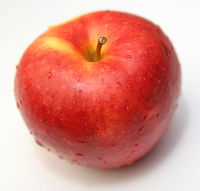Pyruvic acid
Pyruvic acid:
 - alpha-keto acid - the presence of a keto group instead of a hydroxyl group (as in the case of α-hydroxy acids) makes the pyruvic acid more lipophilic,
- alpha-keto acid - the presence of a keto group instead of a hydroxyl group (as in the case of α-hydroxy acids) makes the pyruvic acid more lipophilic,
- in nature it is present in apples and fermented fruit,
- physiologically, it is converted into lactic acid (it is an ingredient of the natural moisturising factor - NMF),
- used in aesthetic medicine in alcohol concentrations of 40-60%,
- fast and deep penetration into the sebaceous hair follicle - comedolytic and sebostatic action (after a series of treatments, sebum reduction of up to 75% has been reported);
Indications for pyruvic peel:
- acne with severe oily skin,
- seborrhoea,
- acne scars,
- photoageing (pigmentation disorders, wrinkles);
Advantages: lipophilic, anti-blackhead, antibacterial, possible to perform in patients with active acne conditions, repairs skin damage caused by sun exposure.
Disadvantages: unpleasant odour, sensation of intensive skin burning.
Pyruvic Peel
It is a peeling based on 40% pyruvic acid and 5% lactic acid.
 Pyruvic acid is an alpha-keto acid. In a water solution it is converted to the lactic acid with sebostatic, antiseptic and intensely moisturising properties. It has an exfoliating effect, stimulates the synthesis of collagen, elastin and glycoproteins more intensively than the glycolic acid. As opposed to other acids, the pyruvic acid exfoliates the skin, but it does not cause its over drying. Additionally, it creates a protective film on the skin, preventing the skin dehydration. The gel formulation and strong acidic pH allows for uniform and slow penetration into the skin with little discomfort during the procedure. The peel is recommended in therapies of acne, seborrhoea and melasma (also known as mask of pregnancy).
Pyruvic acid is an alpha-keto acid. In a water solution it is converted to the lactic acid with sebostatic, antiseptic and intensely moisturising properties. It has an exfoliating effect, stimulates the synthesis of collagen, elastin and glycoproteins more intensively than the glycolic acid. As opposed to other acids, the pyruvic acid exfoliates the skin, but it does not cause its over drying. Additionally, it creates a protective film on the skin, preventing the skin dehydration. The gel formulation and strong acidic pH allows for uniform and slow penetration into the skin with little discomfort during the procedure. The peel is recommended in therapies of acne, seborrhoea and melasma (also known as mask of pregnancy).

